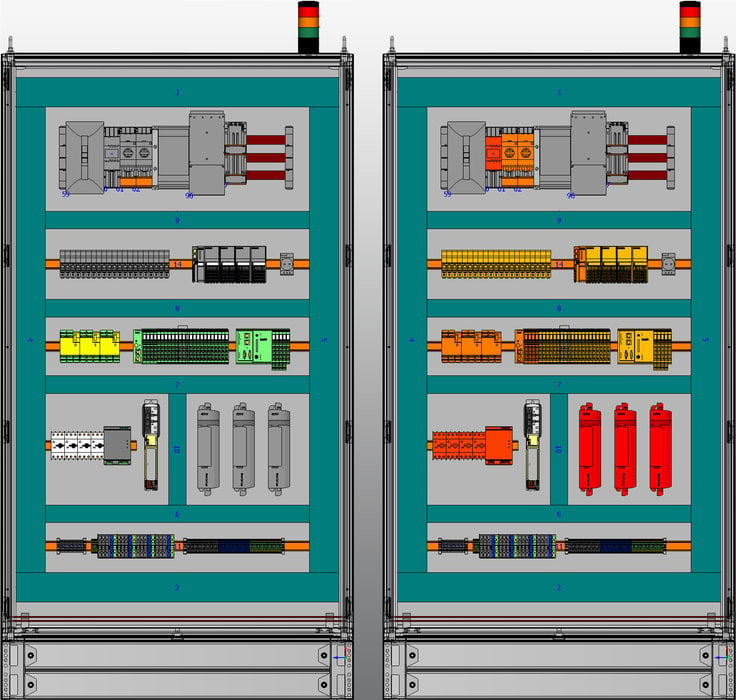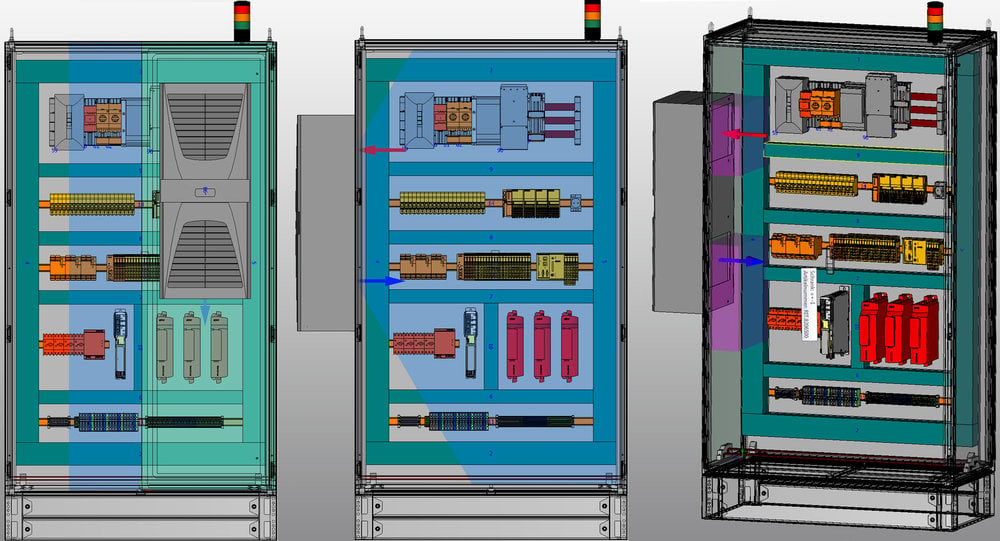www.industryemea.com
02
'15
Written on Modified on
Next step: “Thermal Design Integration”
At the 2015 SPS IPC Drives, Eplan, Phoenix Contact and Rittal are presenting “Thermal Design Integra-tion” – new possibilities for the standardised design of energy-efficent control cabinets with climate control systems. This integrated virtual engineering means companies can avoid design errors with the climate control systems and prevent unnecessary downtimes and service calls, thereby reducing costs while increasing process quality.

At the SPS IPC Drives, cooperations partners Eplan, Phoenix Contact and Rittal are presenting Thermal Design Integration, an integrated concept consisting of digital product data, software-based project planning and newly developed climate control solutions. It promises users in control cabinet engineering powerful and lasting improvements in the areas of design, cooling and trouble-free operation of control cabinets. Designers can verify their assembly layouts with respect to climate control considerations and interactively make provisions for the best possible climate control solution.
Moving forward, virtual 3D design planning in Eplan Pro Panel will be expanded with targeted special functions. The key goal is to communicate to control cabinet designers the functionality, performance limits and integration possibilities of the individual climate control system variations so that they can develop the most efficient climate control solution as intuitively and as simply as possible.
Preventing “hot spots”
Designers need an overview of where the components that especially require cooling are located within the control cabinet to optimally place climate control compo-nents. It is important to avoid so-called hot spots from the very start. Eplan Pro Panel will have new functionality beginning in fall 2016 that colours installed components differently according to their heat-load densities, which are calculated on the basis of the maximum heat loss in relation to the size of the installed component.
Designers also receive information about the distribution of the heat-load density within the entire cabinet. If there’s an imbalance in the distribution, this can be corrected at any time with targeted changes in the mounting layout. All of the required information is made available as device data through Eplan Data Portal. For this, Phoenix Contact is the first manufacturer to provide relevant device data for integrating its components into Eplan Data Portal, including values such as maximum heat loss, minimum spacing and flow directions if the device has its own ventilation.
Optimal climate control and targeted cooling
For ideal and trouble-free air circulation within the control cabinet, designers require visual assistance to compare components’ mounting positions with the climate control system’s determining factors. Spaces that must remain free for air circulation purposes and the areas with ideal climatic conditions are graphically displayed when using Rittal climate control solutions. Spaces blocked off for air circulation cannot be used for mounting components because the climate control components will otherwise be siginificantly impeded in delivering the necessary volumes of cool air.
Visualising airflow and heat loss
The optimally climate-controlled area describes the area that a climate control device can dependably cool due to its flow rate capacity. Eplan Pro Panel correspondingly visualises the relevant device parametres – for example the maximum thrust distance for the cooling air as well as the angle of the air flowing into the device and/or out of the device. This also takes into account the fact that the speed of the flow decreases with distance from the device and thus the device’s thrust distance is limited.
Only through the use of an air diverter can turbulent flow regions be eliminated so that the cooling air enters into the cabinet parallel to the door. The device-specific accessories necessary for this are factored in for notification about the optimal climate-controlled area. In the future, all the necessary data and information for this will be included as part of the product data of the respective Rittal climate control components and made available through Eplan Data Portal. The use of Eplan Pro Panel allows the exact verification for a variety test runs.

Phoenix Contact
Phoenix Contact is the global leader for components, systems and solutions in the fields of electrical engineering, electronics and automation. The family-owned company has more than 14,000 employees around the world and achieved a turnover of €1.77 billion in 2014. The Phoenix Contact Group is comprised of ten companies and more than fifty sales subsidiaries globally as well as thirty local agencies internationally. Its product spectrum includes components and system solutions for energy supplies, including wind and solar, machine engineering, and control cabinet engineering.
Rittal
Rittal, headquartered in Herborn, Germany, is the world’s leading system provider for enclosures, power distribution, climate control systems, IT infrastructure and software and services. Rittal system solutions can be found in nearly all industries, mainly in the automotive industry, in energy production, in machine and plant engineering, and also in the IT and control branches. With around 10,000 employees and 58 subsidiaries, Rittal is present worldwide.

